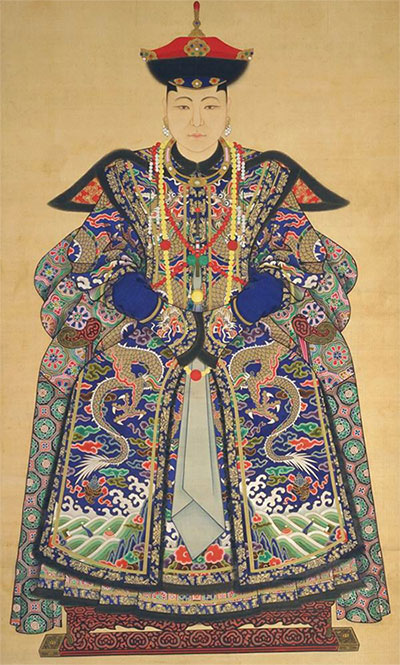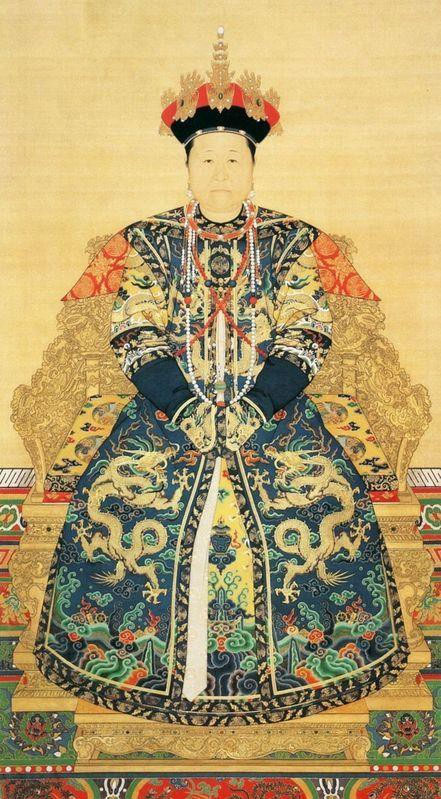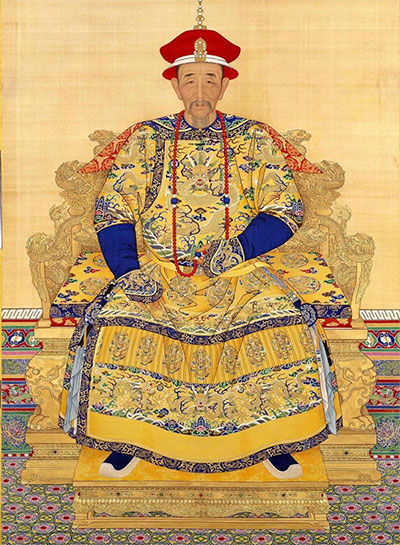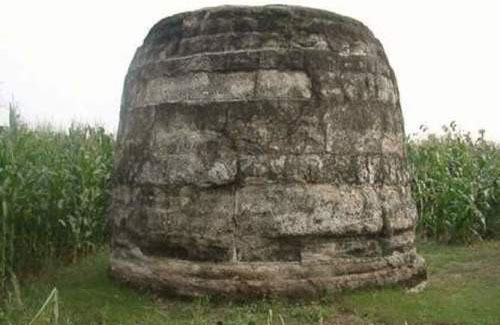Not of noble birth, not a concubine, nor vying for power, Su Ma Lat is celebrated as the most famous palace maid in Chinese history due to her talent and virtue.
Su Ma Lat was born into a poor family in the Khorchin Grassland. Her real name was Su Ma Er Ni or Su Ma Er, which in Mongolian means “a bag made of fur.” By the end of the Shunzhi Emperor’s reign and the beginning of the Kangxi era, she changed her name to the Manchu name Su Ma Lat, meaning “a medium-sized money bag.” Originally just a palace maid serving the Empress Dowager, she was revered by the entire Qing royal family, including the emperor, empress, princes, and princesses, who all respectfully referred to her as Lady Su Ma Lat.
Despite her humble beginnings, Su Ma Lat was exceptionally beautiful and intelligent. As a result, the steward of the Bordered Yellow Banner, Ba Yi Qi Jiat Buu, selected her to serve as a maid to the Second Princess, Mu Bu Tai, who later became the famous Empress Dowager Xiaozhuang in Qing history. Su Ma Lat made a strong impression upon entering the noble household due to her eagerness to learn. Within just a few months, she became proficient in both Manchu and Chinese. Furthermore, Su Ma Lat was renowned for her beautiful Manchu calligraphy. Because of this talent, Empress Dowager Xiaozhuang chose Su Ma Lat to be the first teacher of Manchu writing for her grandson, Kangxi. The Kangxi Emperor himself acknowledged multiple times that his beautiful handwriting was thanks to Su Ma Lat’s teachings.

Portrait of Lady Su Ma Lat. (Image: Internet).
Not only was she intelligent, but Su Ma Lat was also very skilled, especially in sewing. Any clothing that passed through her hands would elicit admiration from everyone. The valuable royal ceremonial outfits of the Qing dynasty were all designed based on Su Ma Lat’s original patterns and designs.
Although Su Ma Lat was a maid of lowly origins, Empress Dowager Xiaozhuang always treated her like a sister. For 60 years, they were inseparable. This bond was especially strong after the death of Hong Taiji, the founder of the Qing dynasty. At that time, Empress Dowager Xiaozhuang was only 31 years old. Su Ma Lat, feeling sympathy for the young widow, decided to remain unmarried for life and stay in the palace to serve her mistress.
The status of Su Ma Lat within the royal family was so special that Empress Dowager Xiaozhuang referred to her as a princess, a title reserved for women of high status in the royal family. The Shunzhi Emperor always maintained formality when speaking with Su Ma Lat, and the Kangxi Emperor called her “Nanny” (the Manchu term for mother), while the princes and princesses referred to her as their grandmother. What earned Su Ma Lat even more respect was that despite being revered by the royal family, she never displayed arrogance, ambition, or superiority.

Portrait of Empress Dowager Xiaozhuang. (Image: Internet).
When Kangxi ascended the throne, Empress Dowager Xiaozhuang became the Empress Dowager and expressed her desire to elevate Su Ma Lat’s status. However, Su Ma Lat declined, wishing only to remain a palace maid serving the royal family. She continued to serve Empress Dowager Xiaozhuang until her mistress passed away in the 26th year of Kangxi’s reign (1687), by which time Su Ma Lat was over 70 years old.
The death of Empress Dowager Xiaozhuang caused Su Ma Lat such grief that she fell ill and could not eat or drink. Concerned for her, Kangxi decided to entrust the care of the young prince Yin Tao—only 3 years old at the time—to Su Ma Lat. According to Qing regulations, only those of rank from the Second Class and above could nurse a prince. Thanks to Kangxi’s kindness, Su Ma Lat found renewed motivation to live and serve the royal family. She devoted herself entirely to caring for Prince Yin Tao.
Thanks to Su Ma Lat’s careful upbringing, Prince Yin Tao grew up healthier and more open-minded than many of his siblings. As an adult, he became one of the most trusted princes by Emperor Kangxi due to his intelligence and broad vision. While other princes were embroiled in struggles for the throne, Yin Tao maintained a neutral position. As a result, after Yongzheng ascended the throne, Yin Tao was not only not marginalized but was also granted the title of Duke and later Prince. Among the 35 princes of Kangxi, Yin Tao lived the longest, reaching the age of 79.

Emperor Kangxi always regarded Lady Su Ma Lat as his mother. (Image: Internet).
Su Ma Lat had two peculiar habits that intrigued many. One was that she did not bathe for an entire year, only using a little water to cleanse herself on New Year’s Eve, which she would then drink. The second was that throughout her life, she never took medicine, even when she was seriously ill. No one understood why Su Ma Lat maintained these habits for decades, despite having the privilege to enjoy luxury within the palace. It is known that she lived healthily into her 90s.
In the 44th year of Kangxi’s reign (1705), Lady Su Ma Lat suddenly fell gravely ill, experiencing blood in her urine and unable to eat or drink. The imperial physicians advised the princes to prepare for her funeral. At that time, Kangxi was on a tour in the north. When the news of Lady Su Ma Lat’s impending death reached the emperor, he wrote a letter instructing the princes: “If Grandmother has an issue, remember to delay the burial for another 7 days.” The purpose was for Kangxi to have one last chance to say goodbye to his beloved nanny.
To honor the contributions of Lady Su Ma Lat to the Qing dynasty and to repay her nurturing and teaching, Kangxi decided to personally oversee her funeral arrangements, even mourning for her. This was unprecedented in ancient Chinese history. At Lady Su Ma Lat’s funeral, not only did Emperor Kangxi weep uncontrollably, but princes, princesses, and concubines also shed tears in sorrow for her.
After the funeral, Kangxi decided to place Lady Su Ma Lat’s coffin near that of Empress Dowager Xiaozhuang at the Temporary Ancestral Hall, so that the mistress and servant could be reunited. When Yongzheng ascended the throne, he decided to convert the Temporary Ancestral Hall into the Zhaoxi Tomb. In addition to constructing a tomb for Empress Dowager Xiaozhuang, he also ordered a tomb for Lady Su Ma Lat to be built nearby. The construction of Lady Su Ma Lat’s tomb took five months to complete.

The only remaining part of Lady Su Ma Lat’s tomb. (Image: Internet).
After the Eight-Nation Alliance attacked Beijing, Lady Su Ma Lat’s tomb was also affected. Nevertheless, part of her tomb still exists and attracts many tourists. Anyone who has heard the story of Lady Su Ma Lat’s life wishes to visit and pay tribute to this most extraordinary palace maid in Chinese history.
A Century-Old Lie
However, when the tomb of this palace maid was excavated by archaeologists, they discovered that it did not resemble the descriptions found in historical texts.
Although the scale of the tomb resembles that of a concubine’s mausoleum, there are no proper burial items inside. There are no signs indicating that the tomb has been robbed by grave robbers, which means this is the tomb’s original appearance.
Typically, if a mausoleum is built according to the rituals for concubines, there should be countless ceremonial items of great value. If Emperor Kangxi truly had deep feelings for Su Ma La, how could the interior of her tomb be so bare while the exterior is so elaborately arranged?




















































